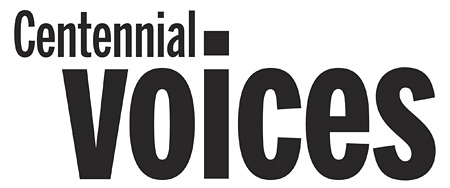
As the Kellogg School celebrates 100 years of leadership excellence, alumni recall how their Kellogg education shaped their lives
By Matt Golosinski and Amy Trang
Ed. note: Over the last century, the Kellogg School has evolved to meet the business world's changing needs. The school's curriculum and culture adapted to extraordinary events over a time that saw humanity move from horse-drawn transportation to spacecraft. Though Kellogg continually has reinvented itself to remain at the forefront of management education — including shifting focus from an undergraduate business curriculum to graduate studies and also pioneering executive education — its core values of academic excellence, innovation and collaborative leadership have united generations of alumni.
Kellogg World invited several of those graduates to reflect on their experiences at the school and to consider how Kellogg has helped shape their lives.
1920s alums recall school's early days
(Excerpted from the Fall 1983 Printout magazine)
In September 1922, when Willard T. Grimm '24 entered the Northwestern University School of Commerce, a single room could be rented for $4 a week, Florsheim shoes were selling for $10 at Axel Sorenson's store, and "Orphans of the Storm" was playing at the Hoyburn Theatre. The same month, Thomas Z. Hayward '24 began his studies in the evening division of the School of Commerce in Chicago. Marshall Field & Co. then was selling hand-loomed ties for $1.25 and English broadcloth shirts for $2.75. When Hardin Hawes '25 became an Evanston Commerce student, controversy was raging over whether coeds should bob their hair. But four years later in 1927 when Tom Singleton '28 was in the Commerce School, the Daily Northwestern was featuring cartoons about a short-skirted coed.
They all believe, as Hardin Hawes expressed it, that "the great new spirit of development at the University came from the years when we were at the school." President Walter Dill Scott "initiated the Greater Northwestern Drive and got the students active and involved," said Hawes, who is associated with the Harris Bank from which he retired in 1968 as senior vice president. "And that great dean of Commerce, Ralph Heilman, laid the groundwork for a lot of good things that have happened at the school."
"We students raised money for everything," said Tom Hayward, who was in the steel business for 48 years and is now with Protectoseal Co. in Chicago. "We didn't depend on the school or the government to do it for us." Hayward, whom his friends describe as having been "president of everything" as a student, told of selling bricks for a dollar apiece to help finance the construction of the new Chicago Commerce building. He also organized a drive to buy uniforms for the University's marching band. "We raised $500," he said, "and they took the money and bought two glockenspiels with it instead."
Hawes, as head of the Student Athletic Association, organized fellow students to sell "N" blankets and other items to support the sports program. "That's the way he got his start in the banking business," laughed Hayward.
Another way to raise money was through all-campus dances. "Send the Purple to Paris" was the theme of one such effort to help Northwestern athletes get to the 1924 Olympic games. One of the popular bands which played for these dances was Bill Grimm's Original Varsity Orchestra, led by Bill Grimm, "piano acrobat." "We played on Saturday nights upstairs at the old Patten Gym," said Grimm, president of W.T. Grimm & Co., a Chicago merger specialist firm. "A dollar a couple, and we played all the old tunes like 'Hot Lips' and Irving Berlin's music, fox trots and swing. And did we dance!"
Next page: Morris A Kaplan '35 met Depression-era challenges
1 | 2 | 3 | 4 | 5 |



